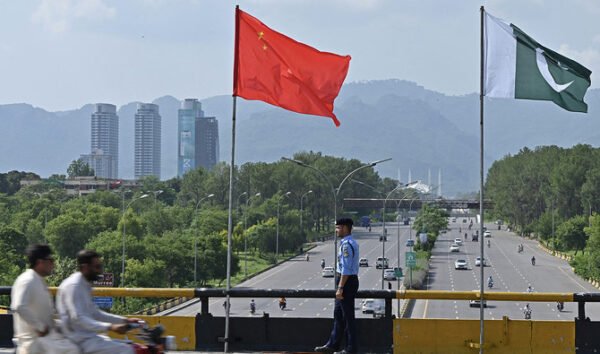Pakistan plans $6.7 billion railway upgrade and dry port development project under CPEC

23 May 2024
Published in: Arab News
A key Pakistani committee operating under the planning ministry on Wednesday presented a modified project proposal for the upgrade of Pakistan Railways’ existing Main Line (ML-1) and the establishment of a dry port at a cost of $6.7 billion to the top economic oversight body for approval.
The ML-1 railway upgrade is among the biggest projects under the multibillion-dollar China-Pakistan Economic Corridor (CPEC), involving the rehabilitation and upgrading of the railway tracks from Karachi to Peshawar.
It is also viewed as a cornerstone of the CPEC initiative due to its scale and the significant impact it is expected to have on Pakistan’s infrastructure and regional economic connectivity.
According to a statement released by Pakistan’s planning ministry, the Central Development Working Party, which evaluates socio-economic development projects, presented a new document on ML-1 to the Executive Committee of the National Economic Council (ECNEC) as Pakistan and China discuss the second phase of CPEC.
“The [ML-1] project is proposed to be financed through foreign funding under the CPEC framework agreement,” said the statement circulated by the ministry. “Pakistan Railways infrastructure is more than a century old and has outlived its useful life.”
“The original track which was built in late 19th century and early 20th century had been designed for low speeds and lesser axle loads which do not commensurate with the present-day loading patterns and desired speeds,” it added. “The Government of Pakistan aims to build necessary logistics facilities to support GDP growth and, in this regard, it intends to up-grade and modernize Pakistan Railways Network.”
The ministry said Pakistan Railways had become a financial burden on the national exchequer, adding that the $6.7 billion project could also make it a more financially and socially viable organization.
It maintained the project could ensure reduction in transportation costs, safety in mobility and effective connectivity between rural areas and markets in urban centers.
Additionally, it would integrate road and rail networks among various economic hubs, including air, sea and dry ports, while creating high-speed and -capacity transportation corridors connecting major regional trading partners.
“To achieve the government’s objective, a major up-gradation of the railway system has been planned, including increasing speed of passenger and freight trains, doubling of tracks of the main line sections, and increasing line capacity so as to facilitate rail linkages to Central Asian States, China and other neighboring countries,” it said.





